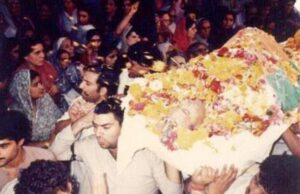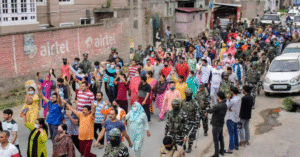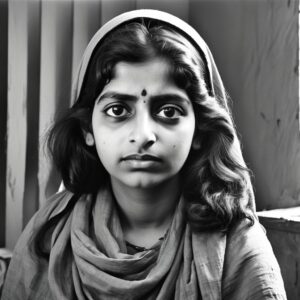The 1987 rigged elections in Jammu and Kashmir are often described as a watershed moment in Kashmir’s history. This narrative, while popular, is incomplete.
The Valley was already boiling with unrest long before the ballots were cast in 1987. To fully understand the origins of the insurgency and the deep mistrust that followed, it is essential to examine the broader context, particularly the political developments of 1984 and the 1986 Anantnag Riots.
The story of Kashmir’s unrest is not defined by a single election of 1987 but by decades of political manipulation, communal tensions, and a gradual erosion of public trust. The events of 1987 were a culmination, not a beginning.
The Political Landscape Before the 1987 Rigged Election
The Significance of 1984: The Role of Gul Shah
To understand what led to the 1987 rigged election, we must look at the events of 1984. At that time, Farooq Abdullah was in power and led the National Conference in Jammu and Kashmir. However, in July 1984, the political landscape underwent a significant shift. Ghulam Mohammad Shah, Farooq Abdullah’s brother-in-law, left the party, causing a political split that threw the state into turmoil.
He aligned with the Congress party, which held power at the centre under Indira Gandhi. With support from the central government, the Congress engineered the dismissal of Farooq Abdullah as chief minister. Soon after, Ghulam Mohammad Shah, also known as Gul Shah, was appointed as the new Chief Minister of Jammu and Kashmir.
When Gul Shah became Chief Minister in 1984, it was not only perceived as a political manipulation but also as a direct intervention by the central government in New Delhi.
At the centre of this dramatic shift was Governor Jagmohan, who was the governor of Jammu & Kashmir then
Acting on instructions from the central government, Jagmohan dismissed Farooq Abdullah’s elected government, paving the way for Gul Shah’s takeover. Farooq and his supporters saw this move as a blatant attack on the democratic process and the autonomy of Jammu and Kashmir.
The bitterness between Farooq Abdullah and Jagmohan began at this very moment and culminated in 1990 when Jagmohan was reappointed as the governor of Jammu and Kashmir.
On November 7, 1986, Farooq Abdullah returned as the Chief Minister of Jammu and Kashmir. This came after the centre dismissed Ghulam Mohammad Shah’s government.
Many viewed this move as a mockery of democracy, as it exposed how easily elected governments could be removed and replaced.
The 1986 Anantnag Riots
The situation worsened in 1986 with the Anantnag riots. These riots were sparked by communal tensions and resulted in attacks on the minority Hindu community in South Kashmir. Temples were burnt, and many families were displaced. The government’s response was slow and inadequate, further eroding public confidence in the state’s ability to protect its citizens and maintain law and order.
To understand the events that led to the 1986 Anantnag Riots, explore here.
The Anantnag riots exposed the deep divisions within Kashmiri society and highlighted the government’s inability to address the concerns of its people.
By 1987, the Valley was already simmering with anger, suspicion, and a sense of betrayal.
The Rise of the Muslim United Front (MUF)
By the time of the 1987 elections, Kashmir was already simmering with anger and suspicion. In this environment, the Muslim United Front (MUF) emerged as a coalition of Islamic political groups, offering an alternative to the ruling National Conference and Congress alliance, which many Kashmiris saw as corrupt and disconnected from local aspirations.
The MUF attracted significant support, especially among the youth, and was predicted to perform well in the elections. Among the young activists drawn to the MUF was Yasin Malik, who was then part of the Islamic Students League (ISL). The ISL HAJY group, with Malik as a prominent member, played a key role in mobilising youth support for the MUF.
The 1987 Rigged Elections: A Turning Point
The elections, held on 23 March 1987, saw the ruling alliance of the Jammu and Kashmir National Conference (NC) and the Indian National Congress pitted against the newly formed Muslim United Front (MUF), a coalition expected to perform strongly. Reports from the time and subsequent analyses detail a pattern of electoral malpractice:

The Hindustan Times
Widespread Allegations of Rigging
The 1987 elections were held in March. From the very beginning, there were widespread reports of irregularities and rigging. Here’s what happened:
- Opposition workers arrested: Hundreds of MUF workers and supporters were detained before and during the elections. Many were held without charges, preventing them from campaigning or participating in elections.
- Ballot boxes tampered with: There were credible reports that ballot boxes were pre-stamped in favour of the ruling alliance before voting even began.
- Voters turned away: In many polling stations, voters who supported the MUF were prevented from casting their ballots by police and election officials.
- Counting stopped: In several constituencies where MUF candidates were leading, the counting process was abruptly stopped. In some cases, the results were changed in favour of the National Conference or Congress candidates.
Widespread protests across Kashmir marked the post-election period.
The
These 1987 rigged elections led to a widespread loss of faith in the electoral and democratic process among Kashmiris. Even politicians and civil servants acknowledged the malpractice, with some estimates suggesting the MUF lost between 4 and 20 seats.
Dozens of activists who had worked for the MUF soon crossed the Line of Control into Pakistan to receive arms training. Many returned as terrorists. Yasin Malik became the top leader of JKLF. In contrast, Mohammad Yousuf Shah became Syed Salahuddin ( the commander of Hizbul Mujahideen,
They are both the faces of terrorism.
In the Crossfire: When the Gun Turned on the Innocent
The 1987 rigged election did not just end a fair vote. It broke something deep in Kashmir. People were angry. They had every right to be. But instead of fighting those who stole their voices, the anger turned in the wrong direction.
The gun did not point at the government. It pointed at the neighbour.
The Kashmiri Pandits became the target.
They were not part of the rigging. They had no power in Delhi. They were not in the backroom deals. They were living their lives. But when the streets burned with anger, it was their homes that were looted. Their temples were set on fire. Their daughters were threatened. Their families were driven out.
A Fight Gone Wrong
This was not a freedom struggle. It was a case of revenge on the wrong people. Those who picked up guns said they were fighting for justice. But they forgot who had caused the pain.
They did not attack the ministers who rigged votes. They did not protest against the officers who jailed young leaders. They did not question those in power. Instead, they turned their guns on their old classmates. Their neighbours. Their teachers. Their doctors. Their poets. Their Nurses. Their scientists. Their Judges,
The Pandits had no weapons. They had no protection. They were alone.
And the real guilty ones? They stayed in power. Nothing happened to them. The ones who stole the vote walked free. But the Pandits were forced to leave behind their homes, their lives, and their memories.
Why justify terrorism?
Silence from Every Side
Congress and the National Conference ran the show. But the BJP stayed quiet. In 1990, when Pandits were being killed, the BJP supported the V.P. Singh government. They saw what was happening. Still, they did not act.
They only raised their voice when their own leader, L.K. Advani, was arrested during the Rath Yatra. Not when women were attacked and raped. Not when children were dragged from their homes. Not when temples were reduced to ashes.
Even today, no one has been punished. No case has seen justice. No party has taken full responsibility. Prime ministers go abroad, but none has stepped inside the camps in Jammu. Camps where Pandits have lived for thirty-five years with broken roofs and broken hopes.
Even after facing violence, loss of homes, and years of displacement, the Kashmiri Pandit community never turned to terrorism. They did not choose the path of violence, even when the system failed them. Instead, they kept their faith in democracy and law. Their calm and peaceful response, despite all they had endured, demonstrates their strength and deep commitment to nonviolence.
Forgotten Pandits, But Shown on Stage
Now, during elections, Pandits are remembered. They are shown in movies. Politicians talk about them on stage. But nothing changes.
They are still not home.
There is no real plan to bring them back. No one has named the killers of 1990. No one has built back their schools. No one has kept the promises made to them.
They are treated like numbers. Not people.
A Wound That Refuses to Heal
This is not just a past story. It is a pain that lives on.
The Pandits lost more than homes. They lost their place in history. Their voices were drowned in slogans. Their tears were buried under politics. The world moved on. But they stayed behind. In camps. In rented rooms. In silence.
People speak of justice. But what does justice mean when no one listens?
Rights groups who cry for truth turned their backs. Writers who filled pages on freedom forgot to write about the night the Pandits left. Neighbours who once shared bread shut their doors.
The silence was not just painful. It was cruel.
This silence hurts more than the gunfire.
Still Waiting
Pandit families still live in the shadow of 1990. Their children grew up outside the Valley, but the wound passed down. They know the stories. They carry the sorrow. They ask the same question their parents once did — when can we go back?
But no one answers.
Governments come and go. Files move. Speeches are made. News channels shout. But in real life, nothing moves. Kashmiri Pandits are still waiting for the world to see them as more than a memory. They want to be heard. They want to go home. Not to a broken shed with two guards. But to the land where their roots were.
Questions That Still Burn
- Why did no one stop the killers?
- Why is there no record of justice?
- Why has the return of Pandits been only a slogan?
- Why do we still have to live like strangers in our own country?
Not Just a Vote, But a Voice
Kashmiri Pandits are not just a vote bank. They are a part of India’s soul. A soul we left behind when it was crying. Every year, we talk about their return, yet they remain in exile.
This is not how a country treats its people.
Justice is not only about courtrooms. It’s about giving people their place back, their dignity, and their voice. Not as refugees. But as rightful citizens.
If this story moved you, don’t let it stop here.
Like and share this post on social media so more people learn the truth about what happened to the Kashmiri Pandits. The more we speak, the less it stays buried.





Pingback: Was Jagmohan Responsible for the Kashmiri Pandit Exodus
Pingback: The Fall of Satya Pal Malik: Last Governor of Jammu and Kashmir